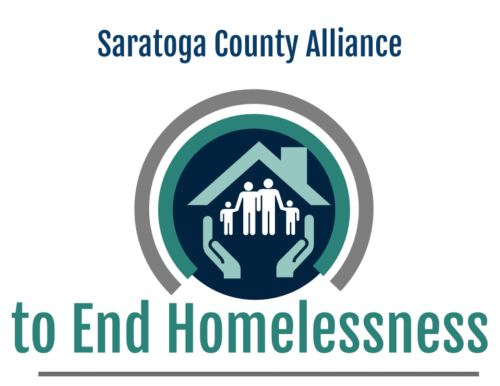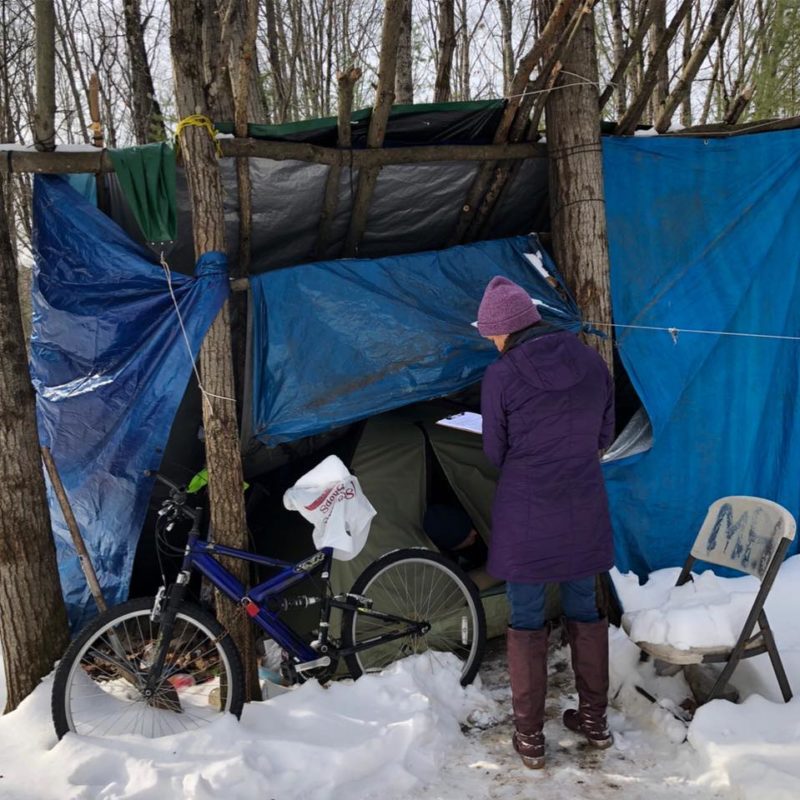
Saratoga County Alliance to End Homelessness contributed this article that was posted in the Saratoga Today, Point in Time: Data Helps Tell the Story When It Comes to Homelessness

When it comes to human services, particularly services for persons experiencing homelessness, the stories of people’s lives and challenges they face provides a deeper and more insightful view of the contributing factors to the situation. Those stories also guide communities, service providers, local officials, and other stakeholders to see the gaps, barriers, and obstacles that can be addressed to smooth the way to permanent housing, and ultimately prevent and end homelessness at its root causes.
However, data can play an equally vital and important role in understanding the nature, characteristics, demographics, and contributing factors to homelessness within a certain community, regionally, state-wide, and at a national level.
Each year, at the end of January, the Housing and Urban Development (HUD) is charged by Congress to conduct a national count of all persons experiencing homelessness across the United States. This information is compiled to provide HUD, Congress, and others with valuable data on the state of homelessness. The national count is called the Point in Time (PIT) Count and represents a “snap-shot” in time of what homelessness looks like.
The data collected from 2020 PIT Count revealed on a single night in America, roughly 580,000 persons were experiencing homelessness, with 39% in unsheltered locations such as on the street, in abandoned buildings, or in other places not suitable for human habitation. This was also the fourth year in a row that homelessness increased in our country with 2020 showing a 2% increase over 2019.
The Saratoga County Alliance to End Homelessness participates in this national effort by conducting our PIT Count on February 24, 2022, throughout Saratoga County and in conjunction with our partners in the North Country. Together we represent the Saratoga North Country Continuum of Care, which is made up of over 40 different agencies, faith groups, and organizations committed to preventing and ending homelessness.
The information gathered during the PIT Count looks at the available housing resources to serve people experiencing homelessness: emergency shelters, transitional living programs, supportive housing, and other housing. Further, the PIT Count looks at the number of individuals who are sheltered on the night of the PIT Count and who is unsheltered.
On February 24, the partnering agencies will seek to utilize a series of tools to conduct the PIT Count, which includes data for the Homeless Information Management System (HMIS) for persons served by shelters and other housing programs, and surveys conducted with individuals experiencing homelessness to understand where they stayed on the night of the PIT Count. This includes on-the-street surveys conducted by dedicated professionals, as well as organizations who come in contact with persons seeking homeless services. It is a community-wide effort that requires coordination and collaboration to ensure an accurate count.
The collective effort of the PIT Count helps provide the critical data and information on the scope, nature, and aspects of homelessness across the entire spectrum; youth and young adults, families, victims of domestic violence, veterans, chronic street homeless persons, persons struggling with persistent mental health and substance use issues, and others experiencing homelessness. This in turn informs the Continuum of Care and its partnering agencies, local and state officials, elected officials, and other stakeholders on how best to respond, funding decisions and allocations in response to the issue, and where efforts should be focused.
In 2020, the Saratoga North Country PIT Count showed that there were 308 homeless persons in Saratoga, Warren, Washington, and Hamilton Counties on one night. This is a huge number of persons experiencing homelessness and highlights the need for a robust and coordinated network of homeless service providers and housing options to best meet the needs of individuals and families.
The data also revealed that of those individuals counted, 96% (297) were sheltered and 3% (11) were unsheltered, which was well above the national averages. This speaks to the great work of our homeless service providers and safety net of housing, but also shows there is more that can be done.
Data is only one part to understanding the issue of homelessness within our communities, but is a critical and extremely valuable tool for a coordinated response for the betterment of all within the community.
For more information on PIT Count and data on homelessness, please see the CARES Inc. website. It is a revealing set of information for the state of homelessness in our communities.
RISE is proud to be a participating agency in the Saratoga County Alliance to End Homelessness.
Learn more at The Saratoga County Alliance to End Homelessness Website.
